Three days ago I headed out on a walking tour of Chiang Mai, intent upon visiting the three major temples in the Old City that the guidebooks classify as ‘not-to-be-missed.’ The problem is that I suffer from a bit of obsessive-compulsive disorder, so I want to see everything and in Chiang Mai you can’t walk 500 yards without running into a temple. Over the past four days I figure I have walked at least 20 miles and seen scores of temples.
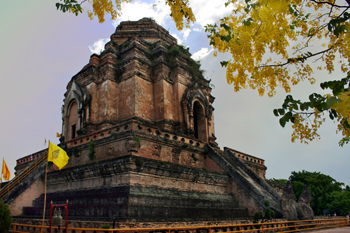
By the end of the first day I was – technical term coming up now – templed out. I thought if I saw one more golden Chedi or one more mirrored great hall I would gag. By the end of the second day I was just numb and my feet hurt so bad I could barely walk. But by the third day I started noticing the differences in the temples. Like the one that’s dedicated to caring for the thousands of stray dogs in Chiang Mai. Or the temple that has dozens of animal statues scattered around its grounds, including a Donald Duck statue right out in front. There are temples with jade Buddhas, temples with quartz crystal Buddhas, and temples with traditional golden Buddhas.
I have learned that all the temples have Viharas (great halls) and Chedis (monolithic stupas, shaped like giant bells, each of which houses a relic of Buddha, such as one of his bones). There are Viharas built of intricately carved teak, Viharas that are covered entirely in multi-colored mirrors that sparkle and blind in the sunshine, and Viharas made of humble bricks cast from the red Asian clay. So, in honor of all this opulence, and in tribute to my very sore feet, I decided to dedicate this post to a photo tour of the temples of Chiang Mai.

At Wat Chedi Luang donation boxes collect funds to take care of stray dogs, visitors are encouraged to participate in a “Monk Chat,” and the faithful water the relics of the Buddha by raising a bamboo container full of water to the top of the Chedi by means of a pull cord and dumping the water on the top of the monument. Constructed in 1391 in a combination of Lanna, Sri Lankan and Pagan architectural forms, it is the tallest temple in Thailand, despite having been reduced in height by a past earthquake.
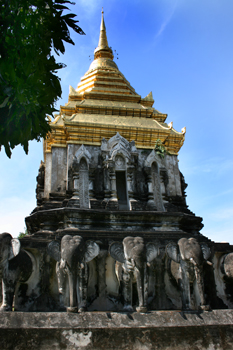
When King Mungrai decided to build the city of Chiang Mai, the very first building he erected was the old Vihara at Wat Chiang Mun. Since it was believed that a city was a living entity that had a body and soul, its life was determined by its birth chart, which states that the city of Chiang Mai was born on the eight day of the waxing moon in the month of Visakha, year of the monkey, 1296, at 4 AM, when construction began at the Siphum Corner of the Royal Temple. This birth chart, inscribed on a giant stone slab, still sits aside the old Vihara at Wat Chiang Mun.
Using a pulley system, Buddhists raise a bamboo canister full of water to the top of this golden- topped Chedi at Wat Chiang Mun, where one of Buddhas bones has been embedded. Once at the top, a lever is pulled to dump the water out onto the Chedi. This process, which is believed to gain favor, is called “watering the relics of the Buddha.”
During my wanderings I found the following temples:

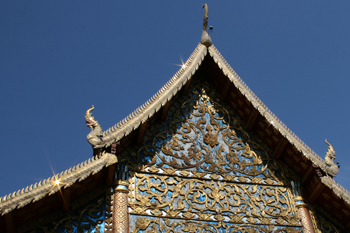
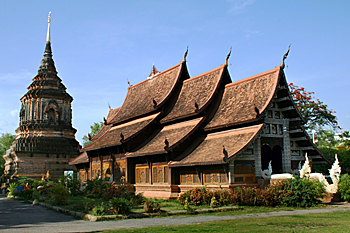
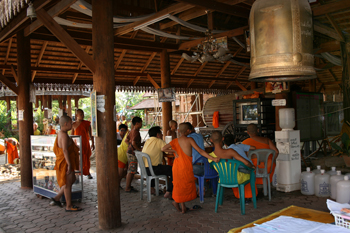
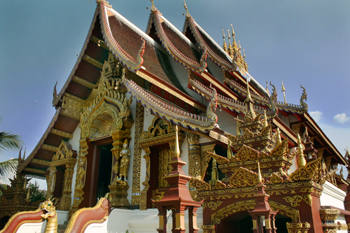
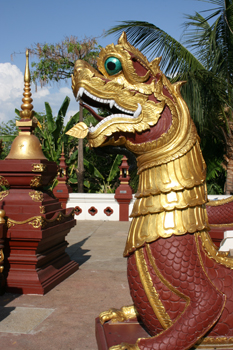

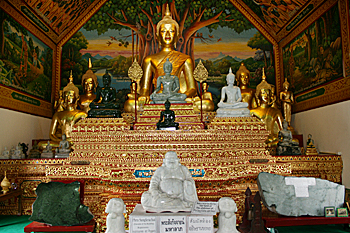
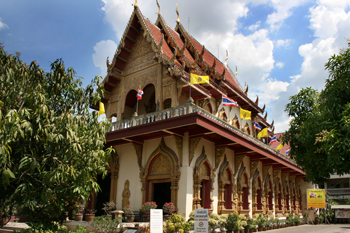
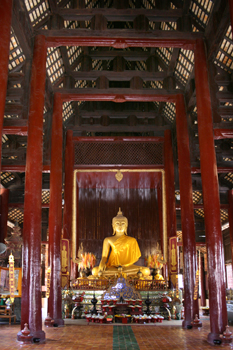
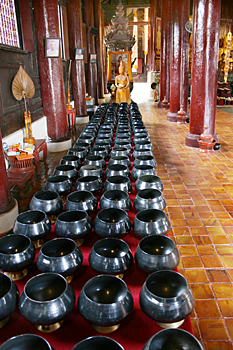
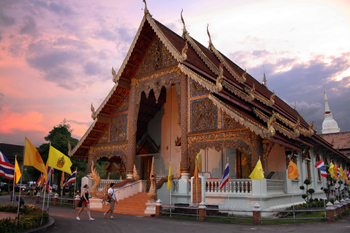
Buddhists believe that when human beings pass away their souls remain at the pagoda that represents the year they were born, thus it is wise to worship at your pagoda while you are alive so your soul can make the transition to the afterlife. Wat Phra Singh (below) is the pagoda representing the year of the dragon, when I was born. Should I be worshiping at this pagoda – just in case?
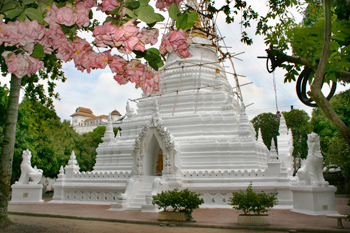
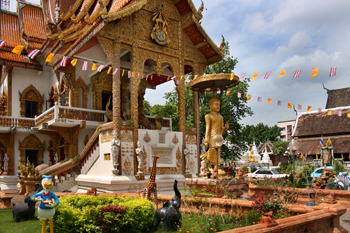
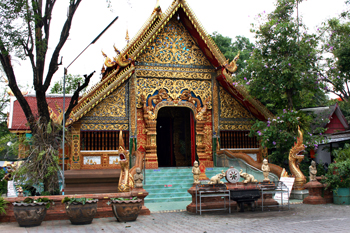
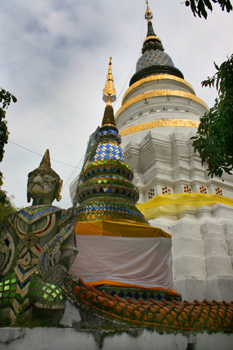
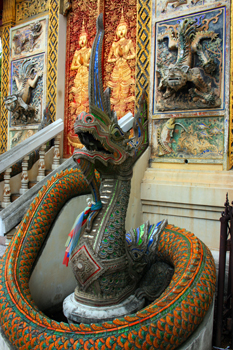
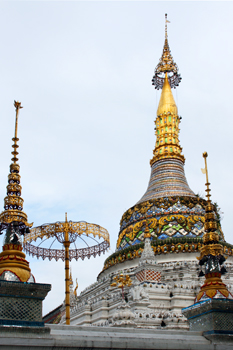

Chiangmai is a beutiful country in thailand
I really enjoyed the tour of the wats — thank you so much for sharing the pictures with us. I thought that I had seen most of the temples in our trips to Chiang Mai but I now realize that I had just seen a few of them. I will have to go back to see the rest. Take care and be well. Glad that the lice (nits) are all gone. If you can find a bottle of white vinegar, this is an old fashioned way of keeping the nits away but it works and is not as hard on your scalp or hair as the shampoo is.